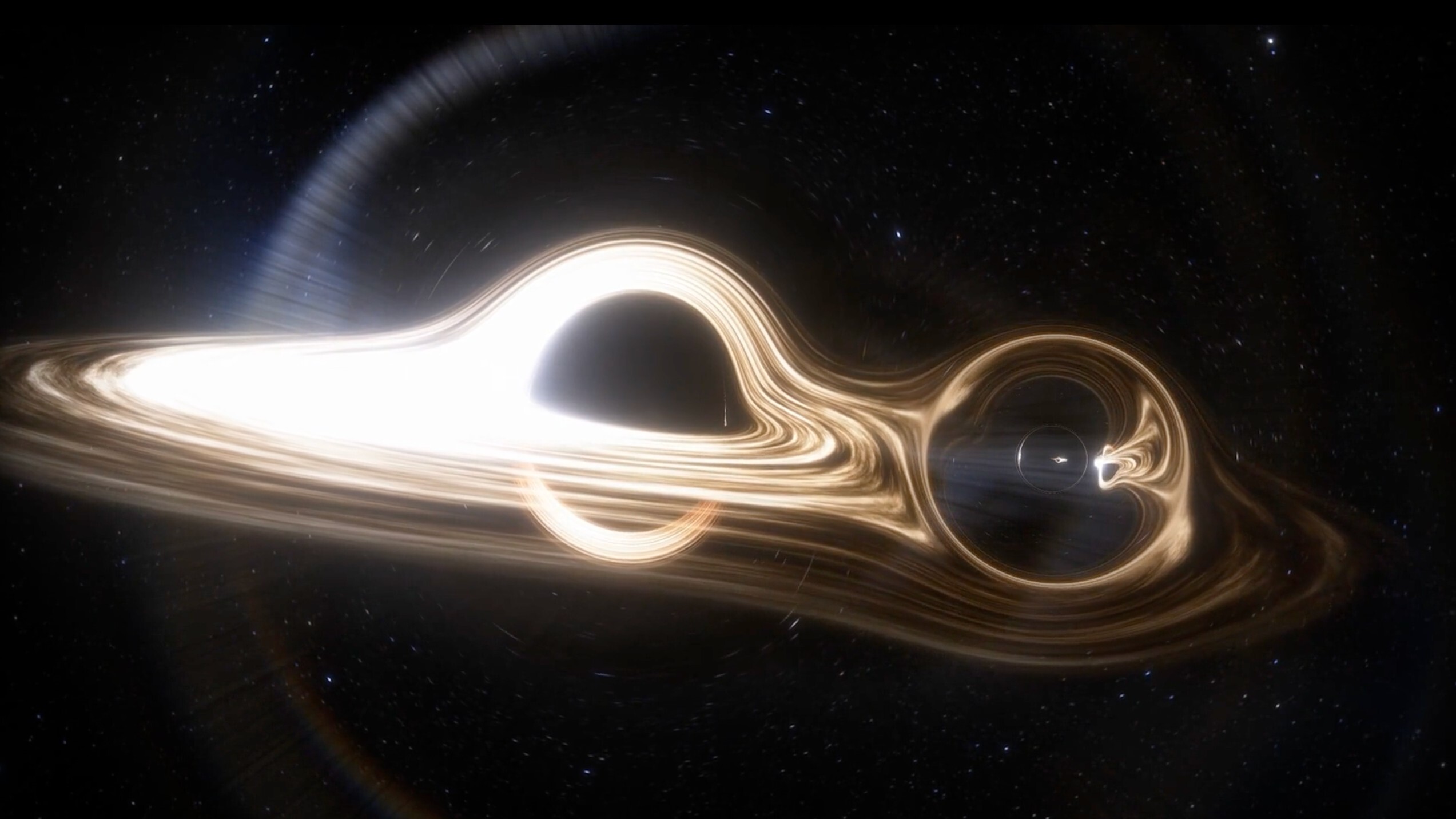Scientists have detected the biggest black hole merger ever known — a gigantic collision from two massive space-time ruptures spiraling into each other — and it could hold evidence of the most elusive type of black hole in the universe.
The merger, which happened on the outskirts of our Milky Way galaxy, produced a black hole roughly 225 times more massive than the sun.
That’s nearly double the previous record holder, which spawned a final black hole with a mass of around 142 suns. The new collision was found by the LIGO-Virgo-KAGRA (LVK) Collaboration, a group of four detectors that identify cataclysmic cosmic events from the gravitational waves that spill out in their wakes. Gravitational waves are ripples in the fabric of space-time, first predicted to exist by Albert Einstein and confirmed by LIGO in 2015. For their groundbreaking discovery, physicists involved with the research earned a Nobel Prize in 2017.
But most intriguing to the scientists are the two black holes’ masses: approximately 100 and 140 times that of the sun. As was the case with the previous detection, black holes of these sizes fall into a “mass gap” that challenge conventional wisdom on how the space-time ruptures form. The researchers will present their findings July 14 to 18 at the 24th International Conference on General Relativity and Gravitation (GR24) and the 16th Edoardo Amaldi Conference on Gravitational Waves in Glasgow, Scotland.
“We expect most black holes to form when stars die — if the star is massive enough, it collapses to a black hole,” Mark Hannam, a physics professor at Cardiff University in Wales and a member of the LVK Collaboration, told Live Science. “But for really massive stars, our theories say that the collapse is unstable, and most of the mass is blasted away in supernova explosions, and a black hole cannot form.”
“We don’t expect black holes to form between about 60 and 130 times the mass of the sun,” he added. “In this observation, the black holes appear to lie in that mass range.”
Related: Europe approves LISA, a next-generation space mission that will discover the faintest ripples in space-time
Black holes are born from the collapse of giant stars and grow by gorging on gas, dust, stars and other black holes. Currently, known black holes fall into two categories: stellar-mass black holes, which range from a few to a few dozen times the sun’s mass; and supermassive black holes, which can be anywhere from about 100,000 to 50 billion times as massive as the sun.
Yet those that fall into the gap of these two mass ranges, known as intermediate-mass black holes, are physically unable to form from direct star collapses and thus remain incredibly rare. Hints of their existence have nonetheless been found, leading astrophysicists to postulate that these black holes grow from merging with others that are similar in size.
Evidence for this merger arrived on Nov. 23, 2023, when two minuscule distortions in space-time passed through the Laser Interferometer Gravitational-Wave Observatory’s (LIGO) detectors in Louisiana and Washington. The two detectors — each with two L-shaped 2.5-mile-long (4 kilometers) arms containing two identical laser beams — are designed so that if a gravitational wave passes through Earth, the laser light in one arm of the detector will get compressed while the other expands, creating a tiny change in relative path lengths of the beams.
The signal that arrived at the detectors was complex, coming from two high-mass black holes that were spinning rapidly. Astronomers typically analyze black hole mergers by modeling signals from different types of black hole binary systems, before matching them to any new signal they see.
But for this technique to work, the models have to be precise, and Einstein’s equations are harder to solve (and therefore less accurate) when the black holes are spinning quickly.
“The black holes in GW231123 appear to be highly spinning, and our different models give different results,” Hannam said. “That means that although we’re sure that the black holes are very massive, we don’t measure the masses especially accurately. For example, the possible masses for the smaller black hole span the entire mass gap.”
For scientists to get better calculations of these masses, these models will have to be refined, which will likely require more observations of similar high-spin mergers.
Such detections would be likely; the LIGO, Virgo and KAGRA gravitational wave detectors have spotted 300 mergers since the start of the first run in 2015, with 200 being found in the fourth run alone. Yet LIGO, which is funded by the National Science Foundation, is facing Trump administration budget cuts that could shut down one detector, making current detections “near-impossible,” according to the facility’s director, David Reitze.
